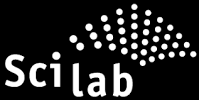ver: 1.0 |
date: 2018-08-18 |
Instructor |
Adj. Prof. Vladimir Skvortsov |
Phone |
032-626-1212 |
vlad at sunykorea.ac.kr or vladimir.skvortsov at stonybrook.edu (be sure to include ”[CSE378]” with no spaces, in the subject line of any e-mail message you send to me) |
|
Office |
Building B, room 409 |
Office Hours |
Mo, We 1:00-1:45 PM or by appointment. Office hours are only held when classes are in session. |
Calendar |
Please see below a list of Textbooks, Grading, a tentative Schedule of topics, as well as the deadlines for all assignments |
Lectures |
See the academic calendar |
Objectives
This course aims to introduce the basic concepts in robotics, focusing on popular robot develop-ments and illustrations of current state of the art. The concepts that will be discussed include coordinate transformations, visual perception, sensors, path planning, kinematics, feedback and feedforward control.
Course Learning Outcomes:
-
Working knowledge of basic robotics concepts including coordinate transformation, kine- matics, dynamics, sensor integration, feedback and feedforward control
-
An understanding of the role of these concepts in robot control (reactive, behavior-based, and hybrid), robot learning and multi-robot systems
-
Ability to construct and evaluate real robot systems in course assignments and projects
Major Topics Covered in Course
Matrix Algebra, Basic Linear Control Theory, Frequency Domain Analysis, Introduction to Scilab, R, Python or Matlab/Simulink, Coordinate Transformations, Direct and Inverse Kinematics, Dynamics, Nonlinear Control, Trajectory Planning, Force Control, Sensors & Actuators, Filtering, Optimal Control, Behavior-based control
Structure
-
Two weekly sessions (each 75 minutes)
-
1st session: lecture, practical exposition, discussion
-
2nd session: lecture, practical
-
Textbooks
-
[book-Cra05] J. J.Craig. IntroductiontoRobotics. 3e. Pearson/PrenticeHall, 2005. ISBN: 978-0201543612
-
[book-Thr05] S. Thrun et al. Probabilistic Robotics. MIT Press, 2005. ISBN: 0-534- 39528-7
-
[book-Cho04] Howie Choset et al. Principles of Robot Motion: Theory, Algorithms, and Implementations. MIT Press, 2004
-
[book-Cor11] Peter Corke. Robotics, Vision and Control : Fundamental Algorithms in MATLAB. vol. 73. Springer Tracts in Advanced Robotics. Berlin: Springer, 2011. ISBN: 9783642201448. URL: https://doi.org/10.1007/978-3-642-20144-8
-
[book-Spo06] S. Hutchinson M. W. Spong and M. Vidyasagar. Robot Modeling and Control. New York: John Wiley & Sons, 2006. ISBN: 978-0-471-64990-8
-
[book-Mur94] Richard M. Murray, S. Shankar Sastry, and Li Zexiang. A Mathematical Introduction to Robotic Manipulation. 1st. Boca Raton, FL, USA: CRC Press, Inc., 1994. ISBN: 0849379814
Slides
CSE378 Introduction to Robotics, slides, [cse378p01] part 1, [cse378p02] part 2
Schedule
Current date:
First day of semester:
Last day of semester:
A number of days during semester:
Last day of classes: (Final exams start)
The days of studies from to .
The table lists the sections we will cover in each lecture. Revisions may be made during the semester. It lists the required reading in Notes, and it is important to do the reading before the scheduled class. Lectures falling on Holidays when no classes are held will be made-up in subsequent lectures.
Assignments
There will be some homework assignments, a final project and a midterm exam. You are expected to do homeworks by yourselves. Even if you discuss them with your classmates, you should turn in your own write-up.
-
2 regular homework assignments (HW1, HW2) plus 1 optional assignment which will be depended upon progress in regular ones
-
Midterm Exam (ME) - This will be a written test
-
Final Project (FP) - submission of the report
Exams/Assignments schedule: TBA
Grading
Course grades will be based on a combination of:
-
HW - 2 (+ 1 optional) homework assignments (30%)
-
ME - Midterm exam (30%)
-
FP - Final Project (35%)
-
AT - Attendance (5%)
Each assignment contributes points to a student’s final grade (there are 100 points total). The total # of points earned at the end of the semester will determine the student’s final letter grade, based on the thresholds below:
F |
D |
D+ |
C- |
C |
0-59 |
60-65 |
66-70 |
71-73 |
74-77 |
C+ |
B- |
B |
B+ |
A- |
A |
78-80 |
81-83 |
84-87 |
88-90 |
91-93 |
94+ |
Example: 90.94 points would award you a B+ grade but 90.95 rounds to 91 and would award you an A- grade.
Course grade calulator:
Tools
RStudio → https://www.rstudio.com/

RStudio |
Shiny |
R Packages |
RStudio includes a code editor, debugging & visualization tools |
Shiny helps you make interactive web applications for visualizing data |
Developers created many packages to expand the features of R |
Scilab → https://www.scilab.org/
